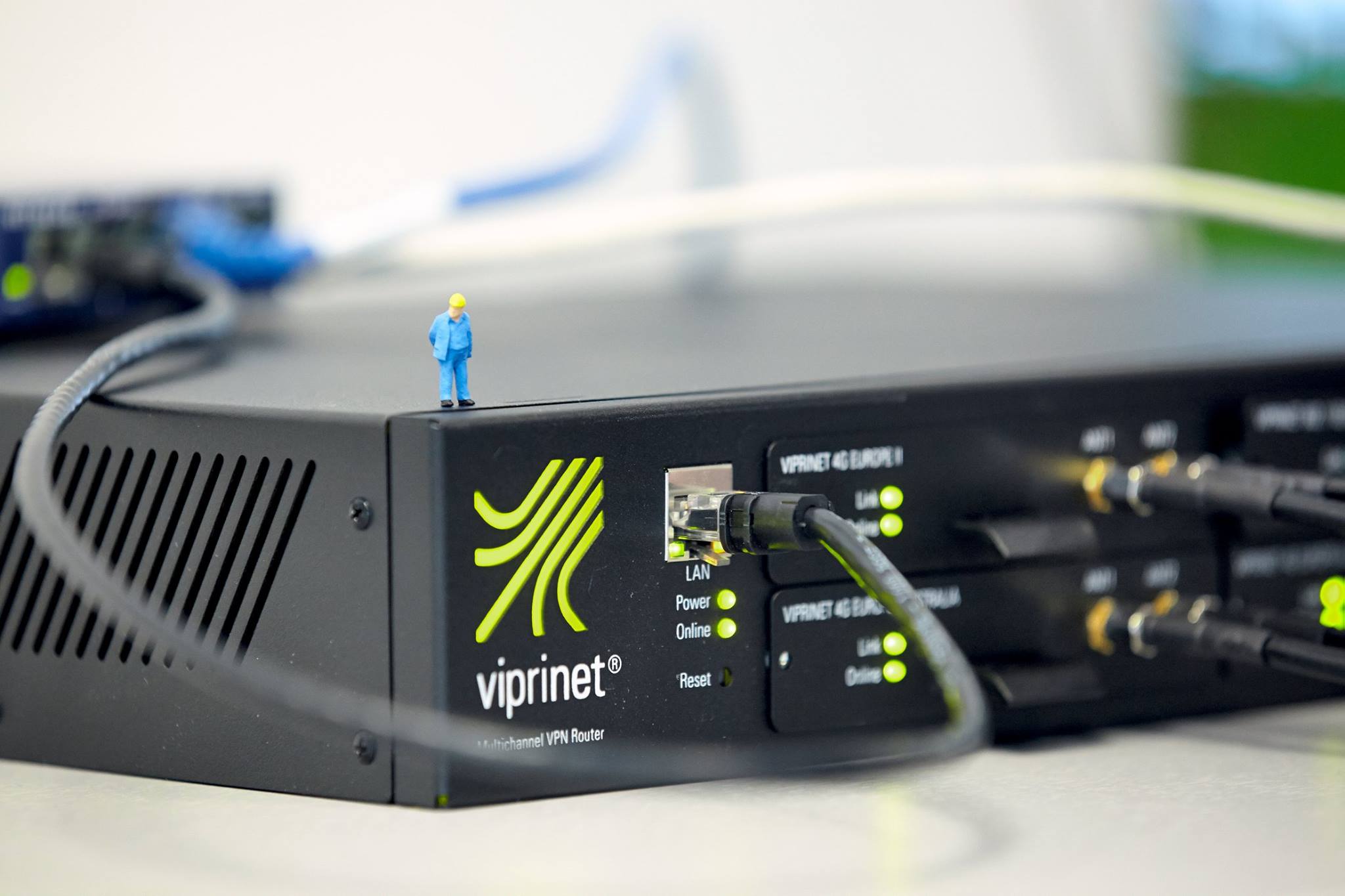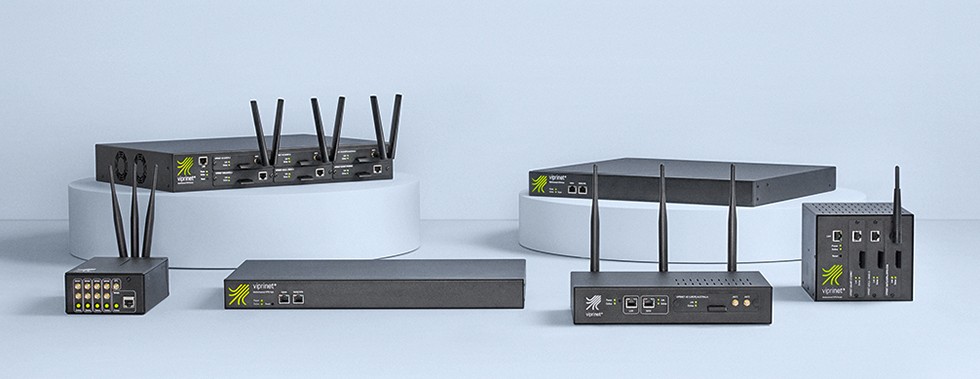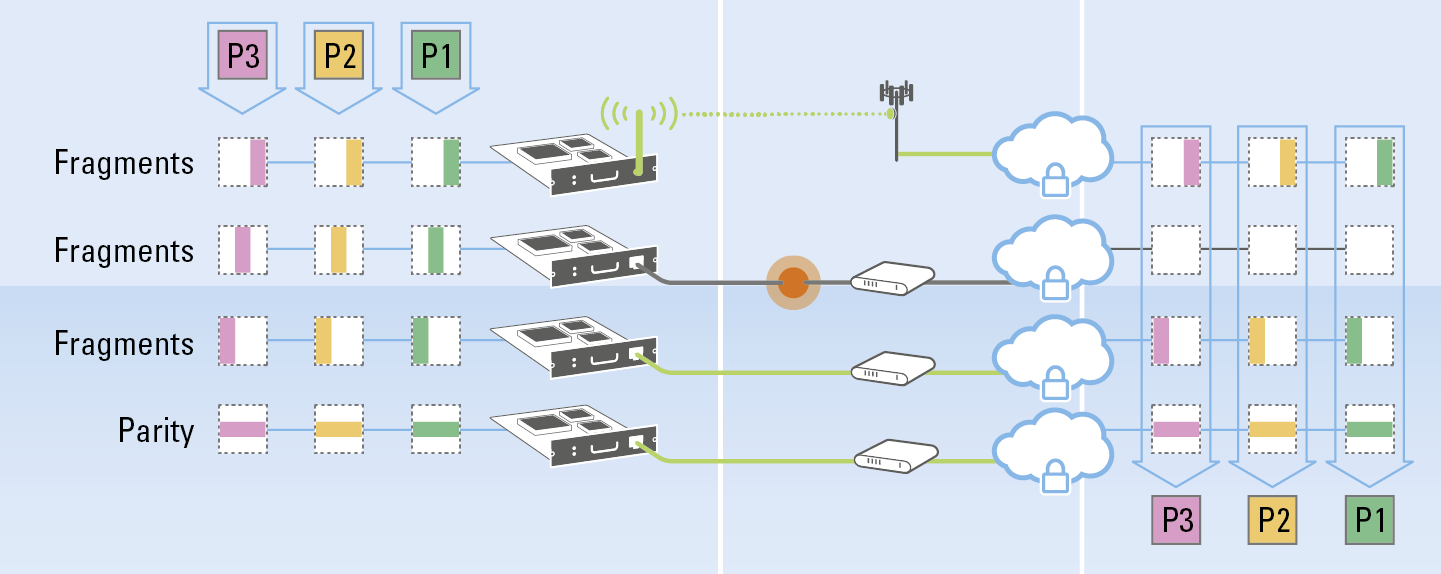WAN Bonding explained
There is a world of difference between load balancing and true WAN bonding - aggregation of bandwidths and maximum reliability cannot be achieved with a simple multi-WAN router.


Business transactions today require companies to have an Internet connection with 100% availability. However, most network solutions have already failed on the basics: as soon as an Internet connection fails and mobile phone cells are overbooked, the availability of the connectivity solution drops significantly.
We invented the principle of enabling the connection of different types of Internet connections using SD-WAN. For us, bonding means a true aggregation of the bandwidth of all WAN media to be connected.

The Multichannel VPN Router is the heart of the Viprinet technology. With this device several broadband lines can be combined into a single, highly available shared line. In contrast to load balancing, which can only distribute the load over several WAN connections, this device realizes a true bonding of all available connections.
Viprinet can combine all types of access media, be it ADSL, SDSL, VDSL, cable, UMTS / HSPA+ / 3G or LTE / 4G. In the LAN, these connections are understood as a single line, which makes the cumulated upstream and downstream paths of the different connections available for individual downloads as well.


Viprinet uses an exceptional SD-WAN-based VPN tunnel technology with star topology for secure and fast site, plant and vehicle connectivity. This requires the integration of two different devices: A Multichannel VPN Router establishes an encrypted VPN channel over every available Internet line to a single centralized remote station, the Multichannel VPN Hub. These VPN channels are then bundled into a tunnel through which the data is transmitted.
The Multichannel VPN Hub is typically located in a highly reliable data center and acts as a switching center: data destined for another company site is passed through the respective VPN tunnel; data destined for the public Internet is decrypted and forwarded to its destination. The VPN Hub enables secure and fast communication between different Multichannel VPN Routers, but also serves as a central exchange point between the encrypted VPN and the public Internet.

The data stream from the LAN is encrypted by the Multichannel VPN Router and distributed to the Internet connections. The encrypted and fragmented data passes through the networks of the used ISPs and arrives at the Multichannel VPN Hub in the data center, which in turn decrypts and correctly reassembles the data stream. The data stream is then forwarded to its actual destination on the Internet. The same applies to the reverse direction: Here the hub encrypts the data stream while the VPN router decrypts it
With bonding according to the Viprinet principle, a fast virtual WAN connection can be established with almost 100 percent reliability. This reliability even increases the more different WAN media are connected. The ability to aggregate the bandwidths of all WAN media guarantees highest transfer rates.
The magic of the Viprinet principle lies in connecting wired WAN media like DSL or cable with wireless media like UMTS / 3G, HSPA+ or even LTE / 4G via SD-WAN. Providers who are able to connect all these media always offer the optimal mix of cost-effective WAN media, ensuring highest bandwidth and reliability. Especially the ability to combine all common 3G and 4G mobile technologies such as LTE, HSPA+, UMTS and CDMA via bonding with satellite and/or DSL or cable is unique in this quality worldwide.
Read our brochure "We keep your business going" to find out what advantages this unique bundling technology offers you in terms of flexibility, security and cost savings.
On 24 pages, the brochure explains the technical and economic advantages of Viprinet solutions, and also introduces all products and technologies.

